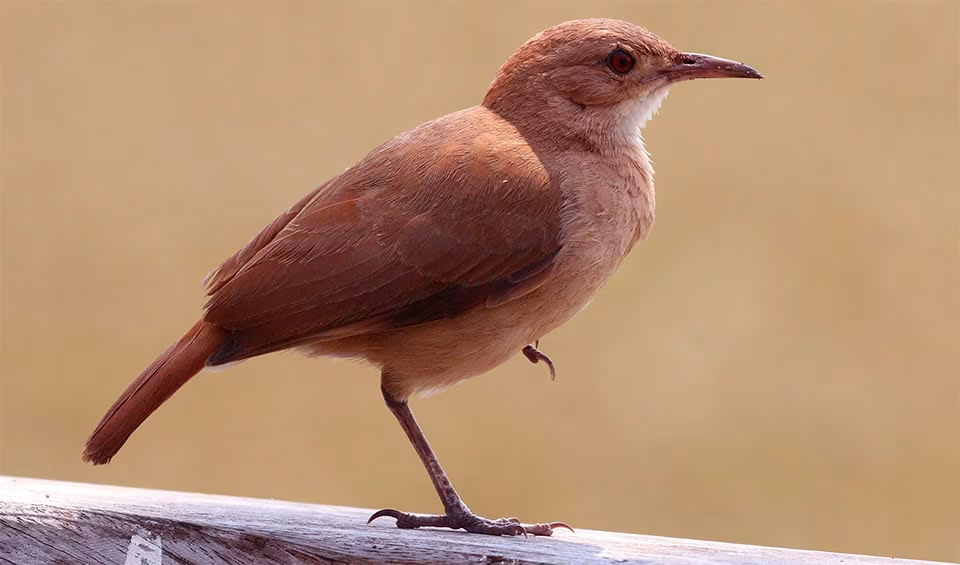A beloved bird across much of South America, known for its distinctive mud nests and industrious nature. It inhabits a wide range of environments including open forests, savannas, grasslands, and urban areas. The Rufous Hornero is particularly common in Argentina, Brazil, Paraguay, Uruguay, and Bolivia. This adaptability to various habitats, including human-modified landscapes, has made it one of the most recognizable birds in these regions.
The Rufous Hornero is a medium-sized bird with a plumage that is predominantly a warm rufous-brown, which provides excellent camouflage against the ground and vegetation. The bird has a robust body, a strong, slightly curved bill, and relatively short, rounded wings. Both sexes are similar in appearance, making them difficult to distinguish visually. The hornero’s sturdy build and earthy coloration make it well-suited to its terrestrial lifestyle.
One of the most distinctive features of the Rufous Hornero is its elaborate nest-building behavior. These birds construct large, oven-shaped nests out of mud, clay, and plant fibers, which harden to form a durable structure. The nests are typically built on tree branches, fence posts, telephone poles, or even on buildings. The construction of a single nest can take several weeks to complete, with both members of a pair contributing to the building process. The durable nests can be reused for several breeding seasons, either by the same pair or by other birds.
Distribution
 Argentina
Argentina Bolivia
Bolivia Brazil
Brazil Paraguay
Paraguay Uruguay
UruguayAnything we've missed?
Help us improve this page by suggesting edits. Glory never dies!
Suggest an editGet to know me
Terrestrial / Aquatic
Altricial / Precocial
Polygamous / Monogamous
Dimorphic / Monomorphic (size)
Active: Diurnal / Nocturnal
Social behavior: Solitary / Pack / Herd
Diet: Carnivore / Herbivore / Omnivore / Piscivorous / Insectivore
Migratory: Yes / No
Domesticated: Yes / No
Dangerous: Yes / No




